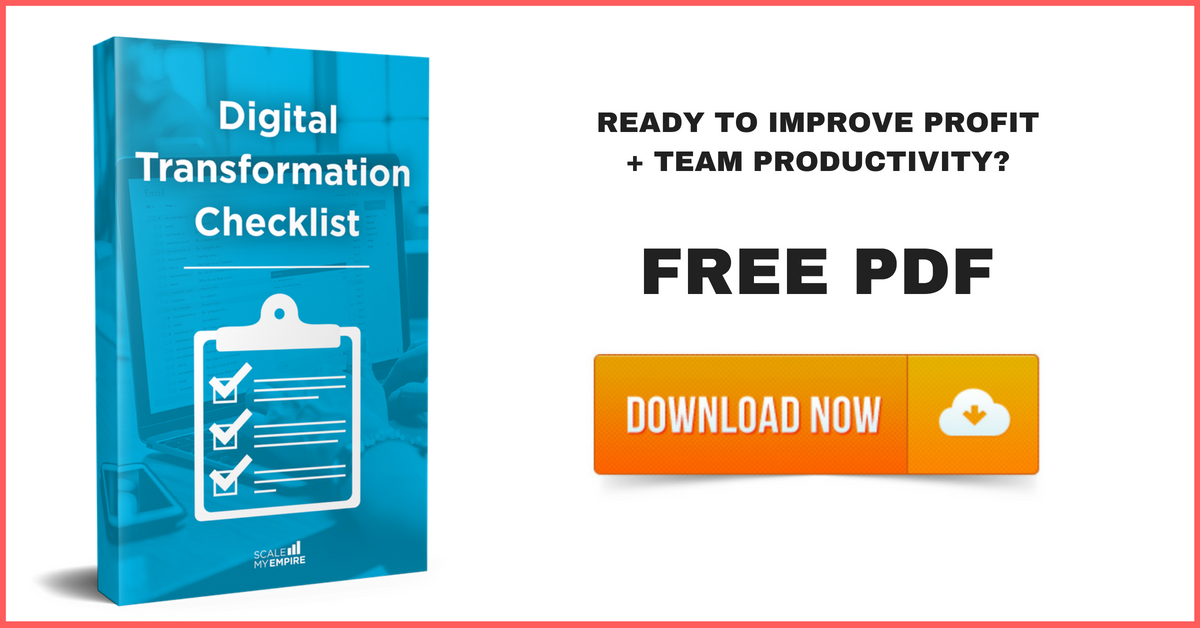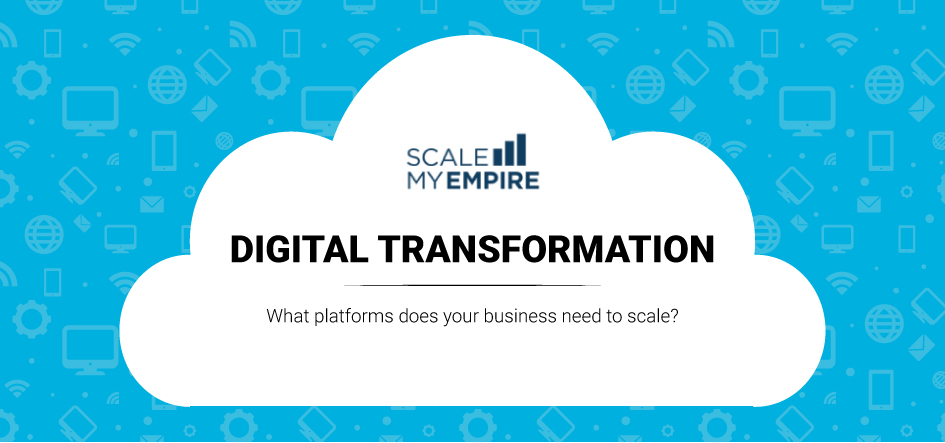
Increasing sales is the most obvious sign of a growing agency, but sometimes it hides a hideous truth – lower margin and difficult cashflow.
Think of your operations – your team – as the method of turning your revenue into profit. Without the right systems in place, when sales increase in the early years operations can struggle to cope. Scope creep, higher labour cost, pricing… all of these things and more can impact your ability to turn dollars into profit on the bottom line.
In this article we’re going to explore a simple and time-worn business philosophy and apply it to improving your agencies operating structure that will drive profit through the roof.
Your Most Important Asset
Think of your team as the machine – the manufacturing plant and equipment – that turns your IP and other resources into a customers solution.
Plant and equipment, like most industries, tends to be the highest element of cost in the business. It’s your most expensive asset, requires regular cash flow each month regardless of how much work you have booked and needs constant maintenance!
Just like any plant, if your team member is:
- Under capacity, it still costs the business money.
- Over capacity it burns out quickly (or can cost higher additional fees to run).
- Being used for a job it isn’t really suited for (wrong role, skills, experience) then it won’t perform and may break down.
- Chopping and changing across multiple jobs and flipping between under and over utilised weekly, efficiency will go down.
- Not being guided by a system or procedure, may create unknown or unwanted results!
Now to be clear – I don’t treat people like machines! This is a simple analogy. Culture is key. In a lot of ways, culture is your operating philosophy. It keeps the plant maintained, operating at optimal levels and working towards the same common goal.
But as your asset grows in size, you have more team members with a broader range of skills, and experiences (operating environments) and of course a more complicated schedule of work, it pays to take a leaf out of any manufacturing handbook and look at ways to optimise your assets capacity to produce the most value at the lowest cost.
Like any production, you have to align the demand generated from sales, with the supply your operating plant is able to create.
Forecast supply before your hire
We’ve already established that your supply is your team (plant and equipment) that processes skills and IP (among other things) to produce a product.
So before we can confidently determine if we need to grow supply (hire more people, buy more desk space etc), we have to be able to forecast demand and the supply we’ll need to fulfill it.
We do the actual linking of supply and demand in a resource planning system. But before we get to that, let’s talk demand.
Your demand is represented in your sales pipeline. This is your forecast of work that will need to fulfilled and can be reported on in most CRM platforms
This demand has to feed into your resource planning system early in the pipeline so you can assess what supply you may need to fulfill it.
Ideally, you will be able to match what roles, skills and time requirements are actually required to fulfill the demand.
The end result is a report that indicates unstaffed demand or surplus supply – by role, skill and effort required.
This is your key strategic decision making file that should drive ALL people investment decisions.
Fulfill Demand and allocate your supply
Once a sale is made, it’s time to match that now locked in demand to actual team members with the right roles, skills and capacity (your supply).
Essentially you want to be able to put real names to the role, skill and time requirements of the new demand.
The goal here is to be able to visually see your teams schedule and easily determine who has capacity to deliver to the requirements – not something a spreadsheet can do well!
A little tip – when a team member hits 80% capacity, that’s really the limit. As I said, you’re not managing machines here. People have limits. They need coffee. AND the more jobs they are doing in parallel, the less efficient they will be.
Now you’ve lined up the plan, it’s time to deliver.
Maximise Utilisation
If we are managing capacity at a resource strategy level from steps one and two already, the next bit should be easy.
With a large team comes a complex set of competing priorities. Take the hard work of managing these priorities off your team’s shoulders by setting a weekly schedule to deliver to. This allows your team to focus on getting work done instead of thinking about what work needs to be done first.
Again think of it as your operating schedule – your plant and equipment should be focussed on delivering quality results. Optimising that schedule is crucial to increasing productivity.
This is often the role of your Operations Manager. The easiest way for them to do this is with a scheduling tool takes the resource plan and commits it to their calendars.
Measure and Monitor
Let’s take a final leaf out of the manufacturing world. Data is king.
Ok that’s a leaf from every. single. business. world.
But really, you’d monitor the production of your plant tirelessly to see where the challenges to production are. To see where the equipment is being stressed and needs some extra love.
Peter Drucker was famously quoted for saying,
“If you can’t measure it, you can’t manage it.”
I wrote a whole article just on this topic, so I’ll keep it brief here.
You have to capture timesheets, cost rates and billable rates against a budget that is set right back in the demand phase of the journey.
It requires a sustained, consistent process of measuring (team accounting for time) and reporting that has to be baked into the management culture of your team.
I know everyone hates filling in timesheets. If you have the right technology in place and you’ve completed steps 1 through 3 already, that tech should actually be able to generate timesheets for you (ask me how…).
That same tech can be providing your with automated reports that make the entire process as simple as a few button clicks.
A highly productive asset
If you’ve gotten all of the above in place, you have also solved one of the most fundamental challenges of growing a team-based business:
- When to grow your assets.
- What assets to invest in.
- Optimised those assets for productivity
- Utilised those assets effectively
And to bring it back to culture, people that are challenged in roles that fit their skills, without being overworked or underworked, are the happiest team members around.
Your business will benefit greatly in terms of profitability and cashflow.
Everyone’s a winner when you align supply with demand.
I trust that you’ve learned enough to start the journey yourself. Otherwise, we are here to help.
Projects are the vehicle for creating value to your clients. As a team-based business, your entire value proposition is underpinned on how well your team can deliver. But, delivering an awesome customer experience is sometimes at odds with delivering efficient, profitable projects.
When projects are at risk of going over budget, often the first casualty is the customer experience. The pressure of maintaining your margins without cutting a few corners can be stressful for the business owner and operations team.
It’s a dangerous cycle we’ve lived through ourselves. I’ve spent 10 years delivering projects of all sizes in government, private enterprise and now to clients globally in my own business, Scale My Empire. With a large geographically dispersed team all over the world delivering hundreds of projects, I understand how important it is to get the balance right.
Along the way, I’ve developed 5 key steps that are critical to delivering projects that not only satisfy (and exceed) your customers’ expectations, but do it profitably as well. These are tried and tested, now I want to share my knowledge and get results for you. The steps are:
- Create a definitive experience;
- Template your production;
- Measure and monitor;
- Gain client insights; and,
- Price correctly.

Create a Definitive Experience
Your customer experience–the journey from the point someone first interacts with your business to the point value has been delivered–is what sets your agency apart in the market.
Your customer experience is a real-world representation of your brand – who you want to serve, why you serve them and how. You create a definitive experience starting with deciding what you want your customer to think, feel and do. Then, determine how your team will deliver this. Make it reality by building your business systems around it.

Template Your Production
One of the biggest lessons in running a project services-based business comes from fast food, notably McDonald’s. Consistency is king. Your customers love it, your team craves it (even the creative ones!).
Based on your customer experience, determine how you can ‘bottle the magic’ of your services to make them repeatable and consistent every time. That even includes your ‘creative works’! There is a process that can be standardised (don’t believe me, ask how).
AND, there’s an important side benefit: A consistent system is more time and cost efficient, which means more margin in your pocket with a happier customer and team.
Measure Completely
Here’s the honest truth – no one loves tracking their time and expenses. But, without it, you cannot determine how efficiently your projects are being delivered.
Peter Drucker was famously quoted for saying, “If you can’t measure it, you can’t manage it.” The fact is, this information is critical to assessing how efficient your delivery is. It’s the only sure way to know if you are making a profit on a project or not.
The real challenge is getting the team to do it. We’ve solved this with technology – ask us how.

Gain Client Insights
This image might be familiar to you…

Whether you are delivering software, creative design or engineering services, the result is often the same. The disparity between what you think you are delivering versus the customer’s perception of it. There is only one way to know for sure – ask them.
Net Promoter Scoring is a simple, effective way to get your customers to tell you what they really think. Plus, with technology, this can be automated and give you actionable data to make improvements to your project delivery and customer experience.
Price Correctly
If you are doing all of the above, you have the metrics and the measurements to feedback into your pricing model. This is essential so you can improve your estimates and quote profitable projects from the outset. You could be delivering great projects, a beautiful customer experience, and have an efficient team, but if you underquote on your pricing you won’t be able to maintain the rest.
These 5 steps are crucial to delivering profitable projects with a beautiful customer experience.
Hopefully, you’ve learned enough to start the journey yourself. Otherwise, we are here to help.
Book a free systems assessment with Scott Gellatly, Co-Founder of Scale My Empire, to see where the gaps are in your operation and get a simple, free strategy to improving cash flow and profitability.
Here’s what clients have to say about working with Scott:
“Scott is next level when it comes to breaking down complex technical structures. I have had multiple people explain the exact same concepts to me before, but to a non-tech head like myself, it wasn’t in a way I could grasp and understand. That’s until I met Scott, who broke it down in a way that enabled me to pick it up in just one training session. Now I have the knowledge and understanding that I need to take my business to the next level.”
Melissa Neighbour, Managing Director, Suburban Town Planners
“I’m a huge fan of Scott and the experience and smarts he brings to turning business challenges into applications and solutions. I worked with Scott on building an effective project management, collaboration and knowledge centre for our agency. We’d previously gone through a couple of different platforms and knew there had to be something that would work more effectively for us. Working with Scott and his team was exactly what we needed.”
David Lawrence, Co-founder, Rocket Agency
“Scott has been a valuable adviser to our business for years and has assisted us with project managing some major initiatives, which have resulted in substantial ROI outcomes and allowed us to enhance our value proposition and do more of what we do best. Scott’s methodology of operational improvement and his ability to identify areas in which efficiencies can be created position him as one of the best small business advisers we have worked with. We would be happy to recommend Scott and his team at Scale My Empire to any business that wants to reach their fullest potential.”
Jackson Milan, Aureus Financial








